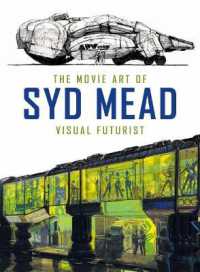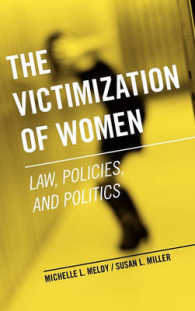- ホーム
- > 洋書
- > 英文書
- > Business / Economics
Full Description
The HRM field is entering smart businesses where the human,digital and high-tech dimensions seem to increasingly converge, and HRM needsto anticipate its own smart future. Technological developments andinterconnectedness with and through the Internet (often called the "Internet ofThings") set new challenges for the HRM function. Smartness enacted by HRMprofessionals - notions of "smart industries", "smart things" and "smartservices" - all put new pressures on strategic HRM. Since the 1990s,organisations have increasingly been introducing electronic Human ResourceManagement (e-HRM), with the expectation of improving the quality of HRM andincreasing its contribution to firm performance. These beliefs originate fromideas about the endless possibilities of information technologies (IT) infacilitating HR practices, and about the infinite capacity of HRM to adopt IT.This book focuses on the progression from e-HRM to digital (d-HRM) -towards smart HRM. It also raises several important questions that businessesand scholars are confronted with: What kind of smart solution can and will HRMoffer to meet the expectations of thelatest business developments? Can HRM become smart and combinedigitisation, automation and a network approach? How do businesses futureprooftheir HRM in the smart era? What competences do employees need to ensurebusinesses flourish in smart industries? With rapid technological developments and ever-greater automation andinformation available, the HRM function needs to focus on non-routine andcomplex, evidence-based and science-inspired, and creative and value-addedprofessionally demanding tasks.
Contents
Editorial.Electronic HRM in the Smart Era; Tanya Bondarouk, Huub Ru l, and Emma Parry Chapter 1.An investigation of the factors driving the adoption of cloud based Human Resource Information Systems by Small and Medium Sized Businesses; Richard Johnson and Kristina Diman Chapter 2. Assessing the degree of Human Resource innovation - an exploratory analysis of Irish hotel corporations; Stefan Jooss and Ralf Burbach Chapter 3. HR analytics: here to stay or short lived management fashion?; Janet Marler, Felippe Cronemberger, and Carson Tao Chapter 4.EHRM systems in support of 'Smart' workforce management: An exploratory case study of system success; Kathleen McDonald, Sandra Fisher, and Catherine Connelly Chapter 5. Professional and non-professional social networks as a recruitment tool: The impact on job seekers' attraction and intention to apply; Francesca Mochi, Rita Bissola, and Barbara Imperatori Chapter 6. Aligning the e-HRM and strategic HRM capabilities of manufacturing SMEs: A 'gestalts' perspective; Francois L'Ecuyer and Louis Raymond Chapter 7. Aiming for strategic e-HRM: motives and consequences of e-HRM implementation in a MNC; Jukka-Pekka Heikkila, Yuqin Feng, and Olga Rentto Chapter 8.e-HRM challenges: an Australian perspective; Arnela Ceric Chapter 9.Smart Industry research in the field of HRM: resetting Job Design as an example of upcoming challenges; Milou Habraken and Tanya Bondarouk Chapter 10.What about agency in e-HRM research?; Johan Gregeby and Marten Hugosson Chapter 11.The Changing Role of Social Media at Work: Implications for Recruitment and Selection; Peter Holland and Debora Jeske Chapter 12.The dis-app-earance of HRM The impact of digitization on the HRM profession; Ineke van Kruining








